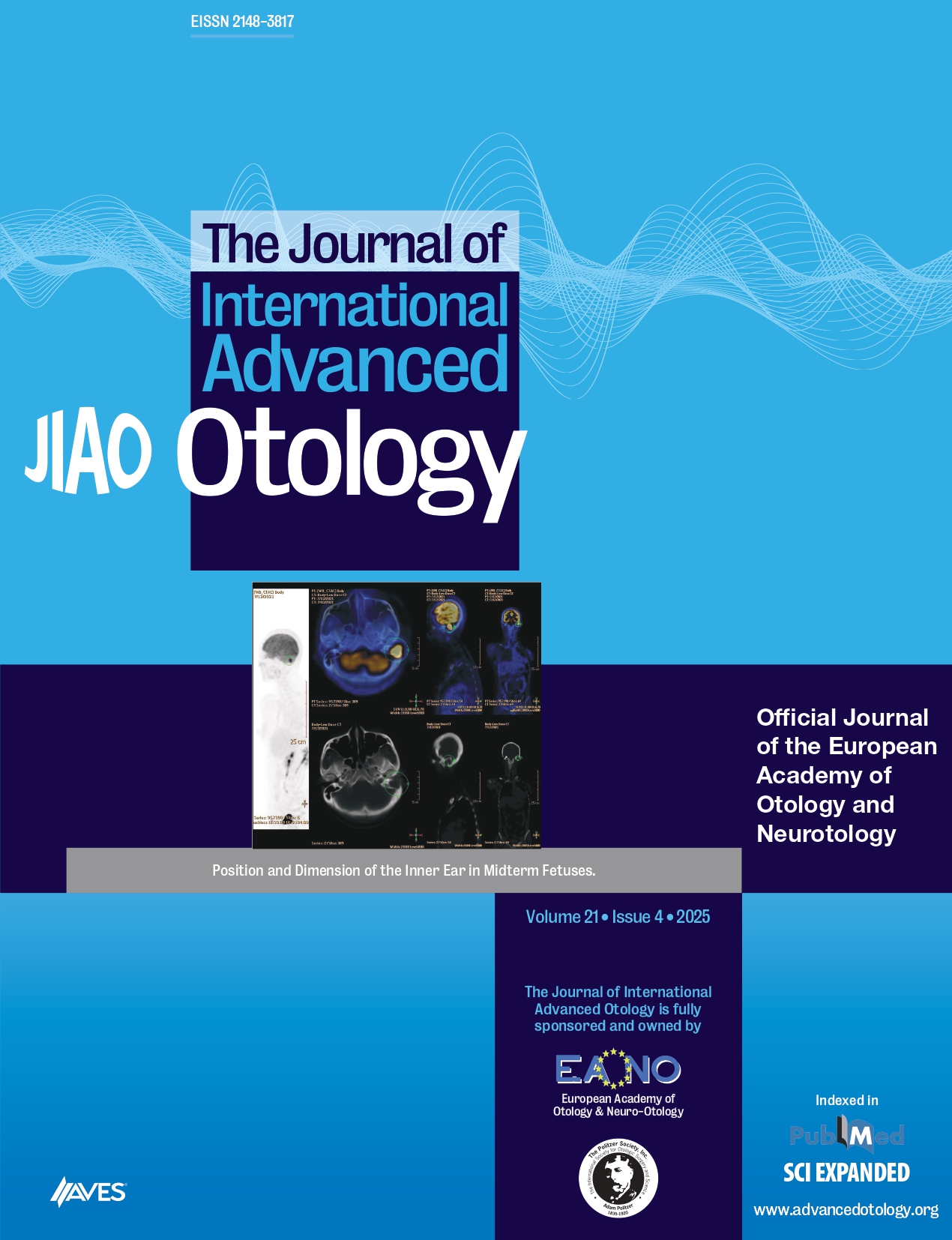Abstract
OBJECTIVE: To use magnetic resonance imaging (MRI) to assess the extent of mastoid opacification after canal wall up (CWU) cholesteatoma surgery.
MATERIALS and METHODS: Thirty-five children in whom post-operative MRI had been obtained after CWU surgery. Cholesteatoma confined to the meso- and/or epi-tympanum was removed using a transcanal approach (n=18). More extensive disease required a combined approach tympanomastoidectomy (CAT, n=17). Mastoid opacification was assessed in both ears by a neuroradiologist blind to surgical details using an ordinal scale from 0 (no opacification) to 6 (completely opacified). The primary outcome measure was presence of normal mastoid ventilation, defined by evaluation of non-operative ears as a score ≤2. The presence of normal ventilation, as well as the raw opacification scores, were compared according to type of cholesteatoma surgery: 1) transcanal, with no mastoidectomy and 2) CAT.
RESULTS: Mastoid ventilation was normal in 18 post-operative ears (51%). There was no significant difference in the proportion of normally ventilated mastoids in the CAT (n=17) and transcanal (n=18) groups (p=0.318; Fisher’s exact). However, mastoid opacification scores were significantly higher in the CAT group than in the transcanal group (p=0.036; Mann–Whitney U).
CONCLUSION: The mastoid frequently fails to become normally ventilated after cholesteatoma surgery. Subgroup analysis suggests cortical mastoidectomy does not increase the likelihood of normal mastoid ventilation after CWU cholesteatoma surgery. MRI provides a non-invasive tool to assess mastoid function, which contributes to the current debate on optimum surgical strategies for management of the mastoid in cholesteatoma surgery. Further research will determine whether this measure of mastoid health correlates with risk of recurrent cholesteatoma.



.png)
.png)